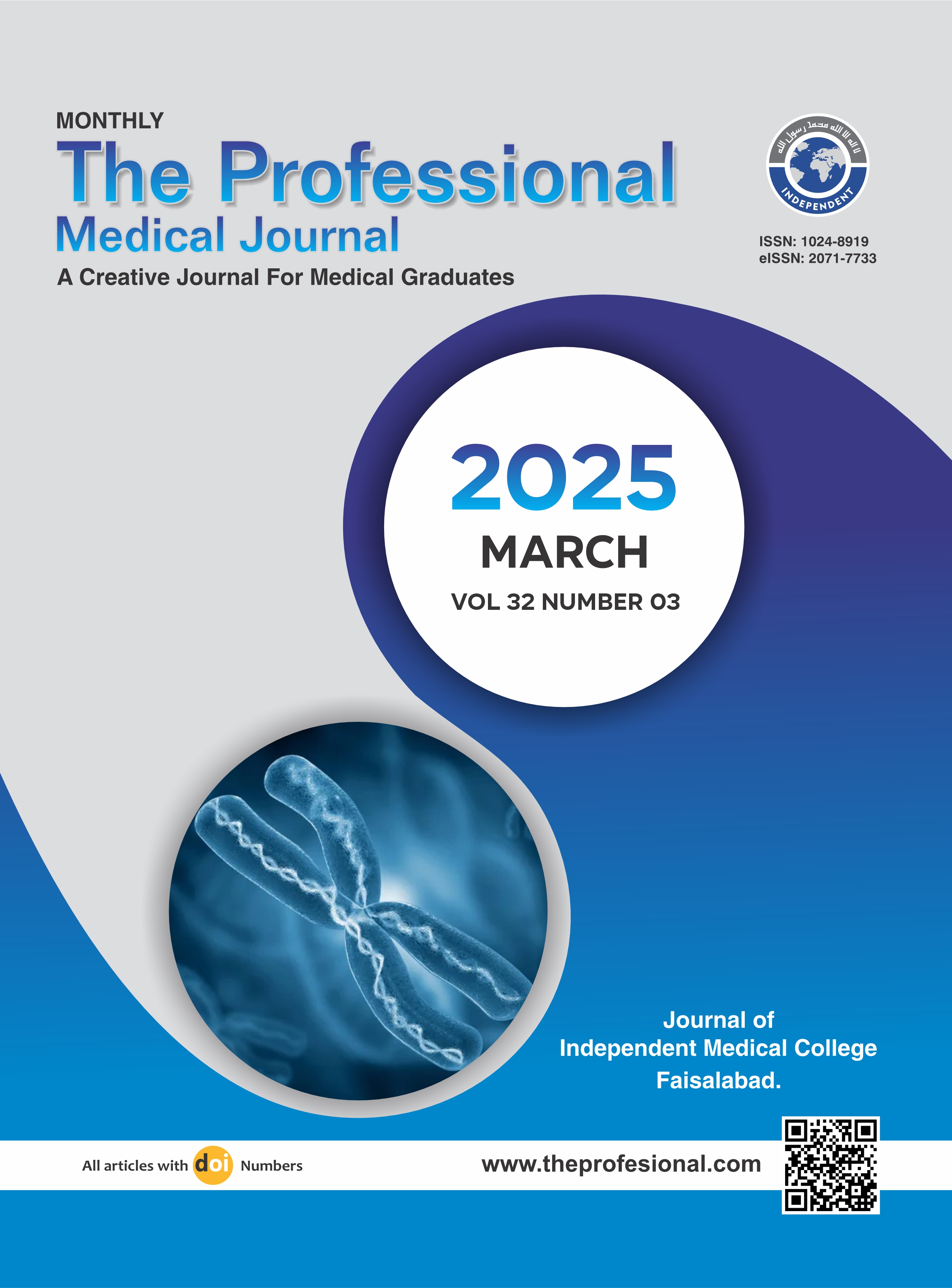Comparison of radiological outcome between dynamic condylar screw (DCS) and distal femoral locking compression plate (LCP) technique in distal femoral fracture.
DOI:
https://doi.org/10.29309/TPMJ/2025.32.03.8839Keywords:
Distal Femur Fracture, Dynamic Condylar Screw (DCS), Locking Compression Plate (LCP), Radiological OutcomeAbstract
Objective: To compare the radiological results of distal femoral fractures treated by DCS surgery versus the Distal Femoral Locking Compression Plate technique, with a special emphasis on union time and associated demographic and clinical variables. Study Design: Randomized Controlled Trial. Setting: The Department of Orthopaedic Surgery, Ghurki Trust Teaching Hospital, Lahore. Period: July 05, 2024, to Nov 05, 2024. Methods: A total of 78 patients with distal femoral fractures were randomized into two groups: Group A (DCS) and Group B (LCP). Data on demographic and clinical characteristics, mode of injury, and union time were collected and analyzed using SPSS version 26. Union time was compared across subgroups, and statistical significance was determined using t-tests. Results: The study revealed significant differences in union time between the two groups. The mean union time for Group A (DCS) was 14.01 ± 0.61 weeks, compared to 13.29 ± 0.68 weeks for Group B (LCP) (p < 0.001). Subgroup analysis showed statistically significant faster union times in Group B across gender, age, side of fracture, and mode of injury. Male patients treated with LCP had a mean union time of 13.33 ± 0.70 weeks compared to 13.90 ± 0.44 weeks in the DCS group (p < 0.001). Similarly, patients aged 19–50 years in the LCP group demonstrated faster union (13.31 ± 0.72 weeks) compared to the DCS group (14.03 ± 0.70 weeks; p = 0.001). Conclusion: The LCP technique exhibited superior results in terms of radiological union time compared to DCS. It is, therefore, a better alternative for treating distal femoral fractures. Orthopedic surgeons can use these findings to make appropriate choices between surgical techniques based on the characteristics of the patient and the pattern of the fracture.
Downloads
Published
Issue
Section
License
Copyright (c) 2025 The Professional Medical Journal

This work is licensed under a Creative Commons Attribution-NonCommercial 4.0 International License.


